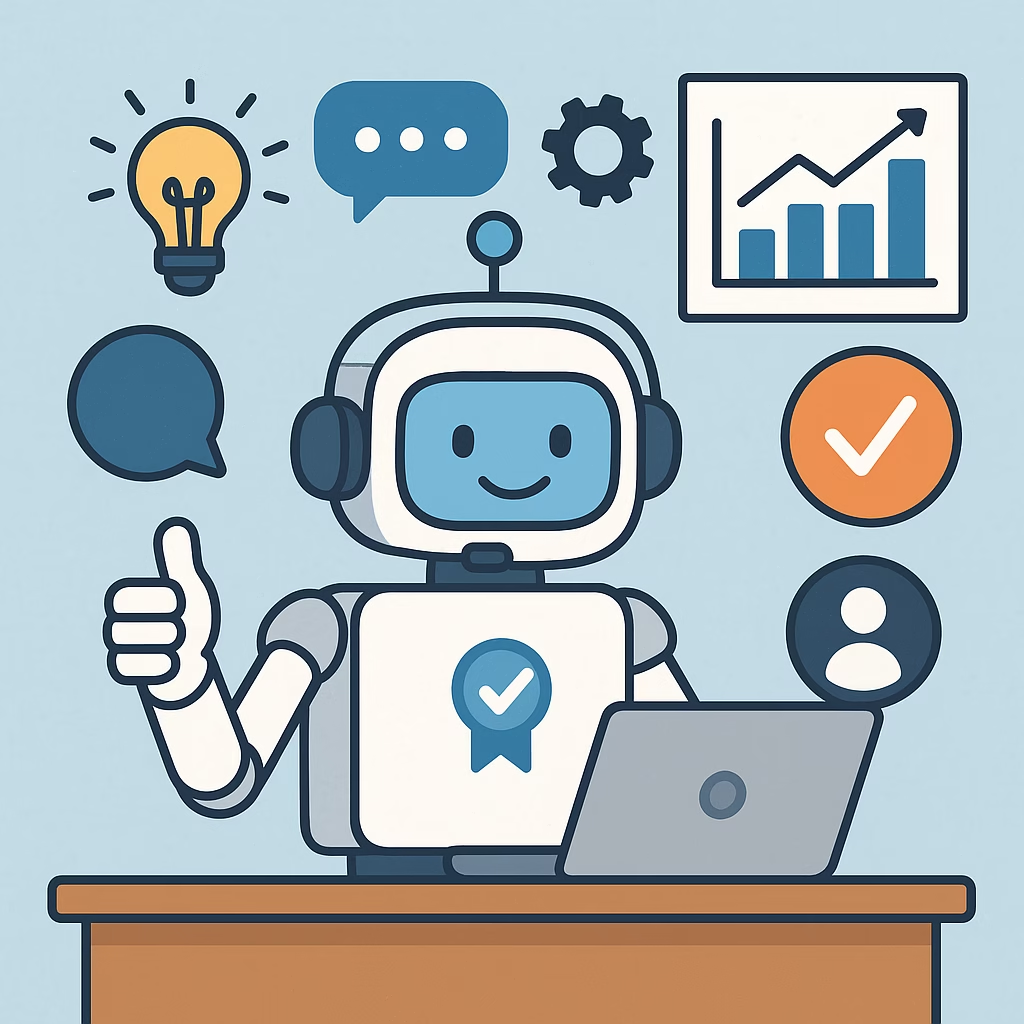What Is an Autonomous Customer Success Platform? A Guide for the Modern Customer Success Manager

In a world where SaaS cycles move faster than human hands can manage, the role of the Customer Success Manager (CSM) is evolving. Manual playbooks, spreadsheets, and human-coordinated follow-ups are no longer sufficient. Enter the Autonomous Customer Success Platform—an AI-native system that doesn’t just assist the CSM, but acts on behalf of them. This isn’t augmentation. It’s autonomy.
This blog serves as a guide for transitioning from traditional customer success operations to an autonomous framework, written with the modern Customer Success Manager in mind.
From Reactive to Proactive: Why Customer Success Managers Need Autonomy Now
The traditional CSM model is built around human-led orchestration: recurring calendar reminders, account reviews, quarterly check-ins, and a library of playbooks. But the SaaS world has outgrown these tools.
The average CSM now juggles 50–100 accounts (Gainsight, 2023), often relying on dashboards that offer insights—but not outcomes. Manual playbooks require interpretation, coordination, and follow-through that many teams simply don’t have the bandwidth for. As churn risk rises and expansion windows narrow, CSMs need more than dashboards. They need autonomous action.
What Is an Autonomous Customer Success Platform?
An Autonomous Customer Success Platform is a system powered by AI agents capable of independently executing CSM functions—without relying on static playbooks or human initiation.
Whereas traditional tools surface insights and suggest next steps, an autonomous platform:
- Detects risk or opportunity across the lifecycle
- Chooses the appropriate action (e.g., renew, escalate, upsell)
- Executes the task autonomously (email, task, CRM update)
- Learns from feedback and optimizes over time
It’s the difference between a GPS that shows routes and one that drives the car.
Key Characteristics:
- Agentic AI: Software agents operate with delegated authority.
- Context-Aware: Pulls from CRM, product usage, and billing systems.
- Outcome-Driven: Optimizes for renewals, retention, and expansion.
📌 Unlike traditional CSM platforms that are built around dashboards and alerts, autonomous platforms are built around actions and decisions.
How Autonomous Customer Success Management Works (vs. Manual Playbooks)
🛠️ Manual Playbooks: Reactive and Resource-Heavy
Traditional playbooks require:
- Human interpretation (“What play applies here?”)
- Manual execution (“Let me write the email.”)
- Follow-up loops (“Did they respond?”)
They’re not scalable. They’re templated SOPs for humans—not machines.
⚙️ Autonomous CSM: AI Agents in Action
In contrast, autonomous CSM:
- Identifies triggers: usage drops, renewal window, stakeholder churn
- Executes autonomously: sends renewal email, creates support task, initiates QBR prep
- Optimizes outcomes: learns which strategies drive retention and expansion
Let’s compare:
| Function | Manual Playbook | Autonomous CSM |
|---|---|---|
| Risk Detection | Based on health scores | Real-time usage + sentiment + history |
| Execution | CSM writes emails/tasks | AI sends/executes immediately |
| Learning | Static templates | Adaptive learning per account |
| Scale | 30–50 accounts/CSM | 200+ accounts/agent cluster |
This is not about replacing the CSM. It’s about freeing them—from repetitive work, from alert fatigue, and from the burden of scale.
How to Automate CSM Workflows: A Transition Guide for Customer Success Managers
Step 1: Audit Your Manual Work
Begin by logging what your week looks like:
- What % of time is spent preparing QBRs?
- How often are renewal emails written from scratch?
- Are churn risks escalated fast enough?
The McKinsey Global Institute reports that 25–30% of Customer Success Manager’s time is automatable with today’s technology (MGI, 2022). With agentic platforms, this number rises even further.
Step 2: Identify Repeatable Triggers
Good automation starts with clear, repeatable events:
- 30 days before renewal: trigger automated outreach
- 20% drop in usage over 14 days: trigger success alert
- No logins in 7 days + ticket opened: trigger retention workflow
Each of these can be handed off to an AI agent with contextual awareness.
Step 3: Choose the Right Platform
Look for platforms built natively for autonomy, not retrofitted with AI. Key capabilities include:
- Native CRM + product usage integration
- Built-in AI agents for renewal, upsell, and churn prevention
- Feedback loops to learn and improve
Platforms like zeeproc exemplify this new breed: no dashboards, no playbooks—just outcomes.
Step 4: Start with Low-Risk, High-Impact Workflows
Ideal first automation candidates:
- Renewal outreach emails
- Low-engagement nudges
- Onboarding milestone tracking
- Automated QBR pre-fill
Each successful handoff increases confidence in scaling further.
Why This Matters for the Future of Customer Success Managers
The rise of autonomous platforms does not eliminate the CSM—it elevates them.
“The CSM role is evolving from coordinator to strategist. Autonomy enables Customer Success Managers to focus on insight, not administration.”
— Harvard Business Review, 2024
Rather than reactively managing tasks, tomorrow’s Customer Success Managers will:
- Design lifecycle strategies
- Interpret high-level signals
- Build customer intimacy through tailored moments
- Coach AI agents, not replace them
This strategic shift is only possible when the underlying machinery of execution becomes autonomous.
Conclusion: It’s Time to Rethink What a Customer Success Manager Means
The autonomous customer success platform is not a vision of the future—it is the infrastructure of now. For Customer Success Managers tired of reactive work and fragmented tooling, the shift toward autonomy is both a relief and a revolution.
No more alert fatigue.
No more juggling 50 dashboards.
No more chasing overdue renewals.
Instead, a new era: where the CSM orchestrates outcomes, and autonomous agents execute with precision.
If you’re ready to make that shift, begin with one question:
What’s the first thing you’d stop doing if your platform could act for you?
📚 References
- Gainsight. (2023). State of Customer Success: Annual Report.
- McKinsey Global Institute. (2022). The Future of Work After COVID-19.
- Harvard Business Review. (2024). AI and the Evolution of Customer Success.
